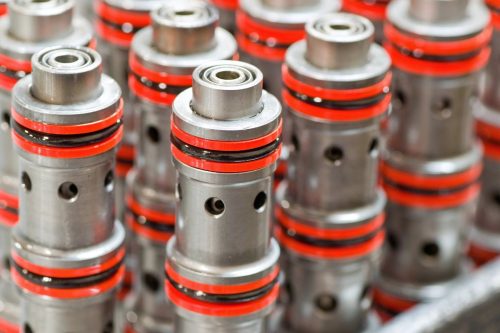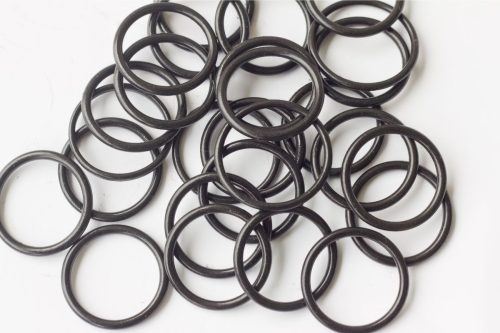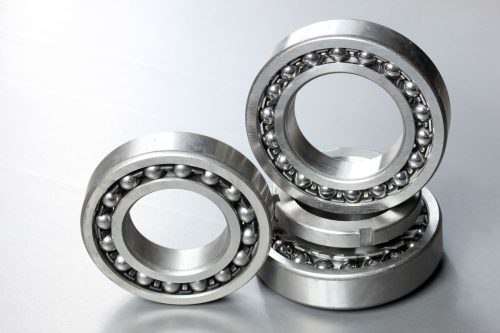
If you’ve ever found yourself wondering “what do the numbers on bearings mean?”, you’re not alone. Bearing codes can be confusing initially, but once you understand the format, they’re actually a very convenient way to identify a bearing’s type, size, and key specifications, giving you key information you need.
This blog aims to help you understand how to read bearings, and how to identify bearing numbers using dimensions such as bore, outer diameter and width.
How bearing numbers work
The base code of bearing numbers is part of an international designation system that helps engineers, manufacturers, and maintenance professionals quickly identify a bearing’s design and fit. The base codes follow a structured format that reveals the bearing type, series, bore size, and other additional features.
Most standard bearings are identified using a multi-digit number (6205 for example). Once you understand the format, decoding them becomes a straightforward process that saves time and minimises errors when selecting or replacing bearings.
How to read bearing numbers
Bearing type
The first digit identifies the bearing type:
- 1 = Self-aligning ball bearing
- 2 = Spherical roller bearing
- 3 = Double row angular contact ball bearing
- 4 = Double row ball bearing
- 5 = Thrust ball bearing
- 6 = Single row deep groove ball bearing
- 7 = Single row angular contact ball bearing
Each bearing type is designed for different load conditions. For example, angular contact bearings are ideal for combined radial and axial loads in one direction while single row deep groove ball bearings work with lighter radial and axial loads in both directions.
It should be noted different bearing types such as roller bearings may start with a letter (N in this instance) instead of numbers. These prefixes can differ depending on the manufacturer making it important to look at their catalogue.
Bearing series
The second digit relates to the bearing’s diameter series and toughness.
- 0 = Extra light
- 1 = Extra light thrust
- 2 = Light
- 3 = Medium
- 4 = Heavy
- 8 = Extra Thin Section
- 9 = Very Thin Section
Choosing the correct series ensures the bearing can accommodate the expected load without excessive size or weight.
Bore size
The last two digits (except for 00 to 03 as seen below) are multiplied by 5 to get the inner diameter in millimetres:
- 00 = 10 mm
- 01 = 12 mm
- 02 = 15 mm
- 03 = 17 mm
- 04 = 20 mm
- 05 = 25 mm
This standard sizing makes matching or replacing similar bearings across brands and industries very straightforward.
Common suffixes in bearing codes
Suffixes in the bearing number give even more detailed information about the bearing’s features. These vary between manufacturers but some common examples you may see include:
- ZZ = Shielded on both sides (metal seal)
- 2RS or DDU = Rubber seals on both sides (non contact seal or contact)
- C3 = Greater than normal internal clearance
- NR = With snap ring groove
- K = Tapered bore
- P5, P6 = Precision grade
It should be noted these are not within the base codes.
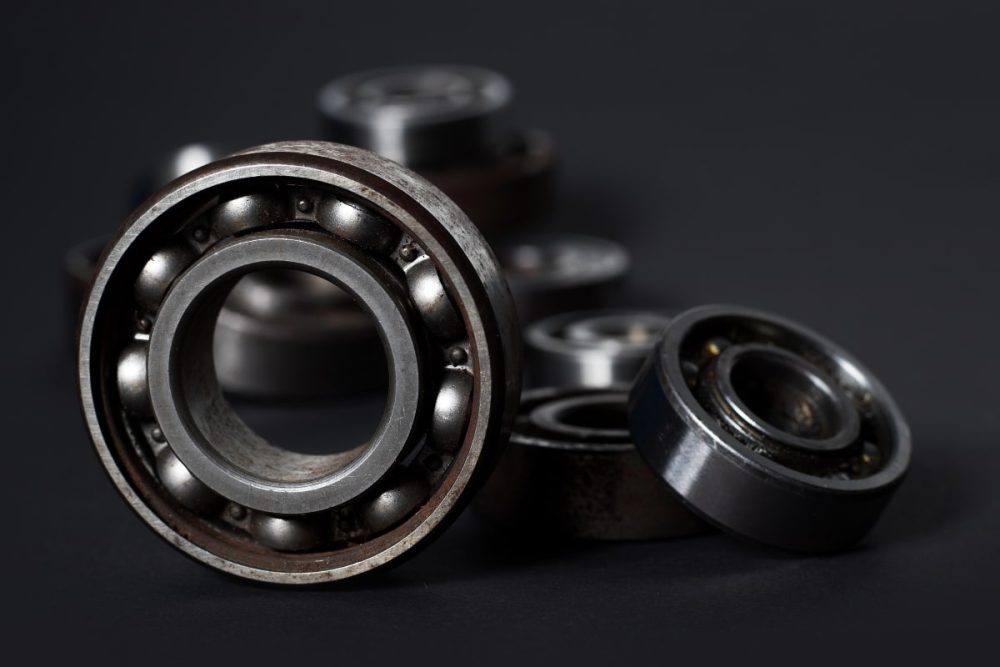
Examples of different bearing codes
Here are a few examples of bearing codes and what they mean:
What is the meaning of bearing number 6304?
- 6 = Deep groove ball bearing
- 3 = Medium series
- 04 = 20 mm bore
What is the meaning of bearing number 7206
- 7 = Angular contact ball bearing
- 2 = Light series
- 06 = 30 mm bore
Understanding these designations helps match a bearing to its function, whether that’s managing high speed, heavy loads, or resisting contaminants.
Tips for identifying bearings without codes
Sometimes a bearing number is unreadable or missing. In these cases, you can still determine the correct replacement by measuring three key dimensions:
- Inner Diameter (ID), also known as the bore diameter, is the internal hole that fits over a shaft
- Outer Diameter (OD), the external measurement across the outer ring
- Width (W), the total thickness of the bearing from side to side
Once you have these measurements, compare them to a bearing dimension chart or use an online bearing finder tool. This will help you identify the likely bearing code or basic designation.
For example, if you measure:
- 25 mm bore
- 52 mm outer diameter
- 15 mm width
You’ll likely find the bearing is a 6205. Based on what it was being used for, From there, you can decide on the appropriate suffix based on what else you need (what application is the bearing going to be used for).
Always match the exact specs when replacing a bearing in critical applications to ensure safety, efficiency, and equipment longevity.
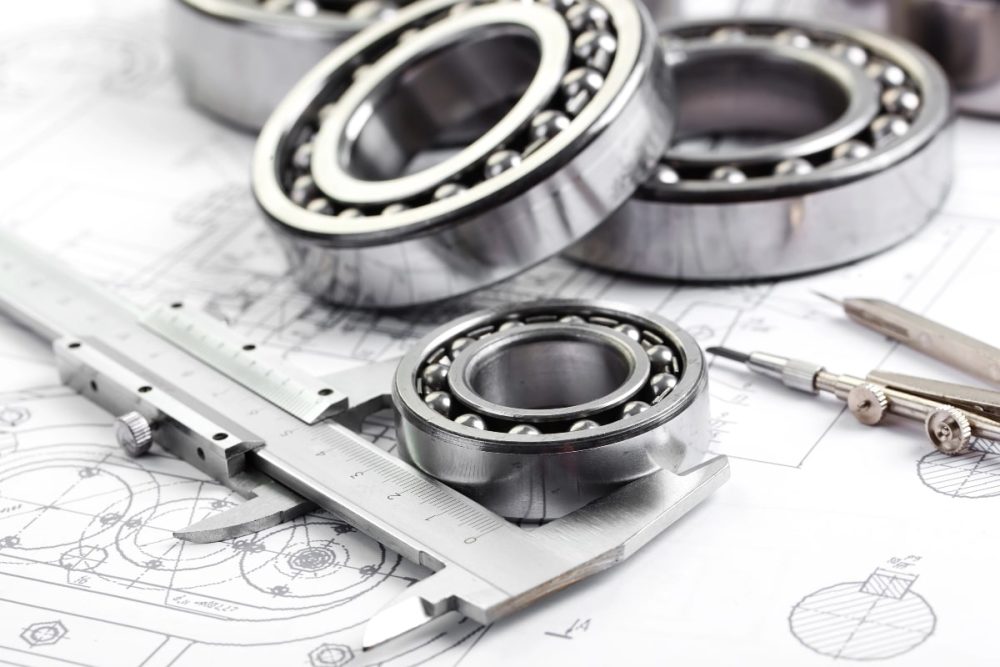
Bearings at Statewide Bearings
Bearing numbers are a compact, standardised way of describing everything from the bearing type and bore size to the seal type and load capacity. Learning how to read bearing numbers allows you to select the right part confidently, avoid costly delays, and ensure optimal performance.
Statewide Bearings is a proud bearings distributor, having access to the best manufacturers in the world such as NSK, FAG (Schaeffler) and Timken.
These are just some of the bearings we supply:
- Ball Type Bearings
- Cylindrical Roller Bearings
- Spherical Roller Bearings
- Taper Roller Bearings
- Plain Bearings & Bushings
- Split Bearings
- Slew Ring Bearings
- Needle Roller Bearings
- Wider Inner Ring Bearings
- Pacflange Self Lubricating Bearings
Contact us today for all your bearings needs and solutions!
Frequently asked questions
Some bearings use manufacturer-specific codes or legacy formats, especially for specialty or OEM components. In these cases, refer to the original equipment manual or contact a supplier like Statewide Bearings for cross-referencing.
Not necessarily. While the dimensions and basic design are standardised, differences in material quality, sealing design, cage type, and manufacturing tolerances can affect performance. Premium brands often offer better heat treatment and longevity. This should be set out in either the prefix or suffix of the bearing but sometimes isn’t.
Signs like overheating, unusual noise, or premature wear could point to incorrect clearance, load rating, or sealing for your environment. If unsure, consider a bearing failure analysis or contact a technician for help selecting a better fit.

